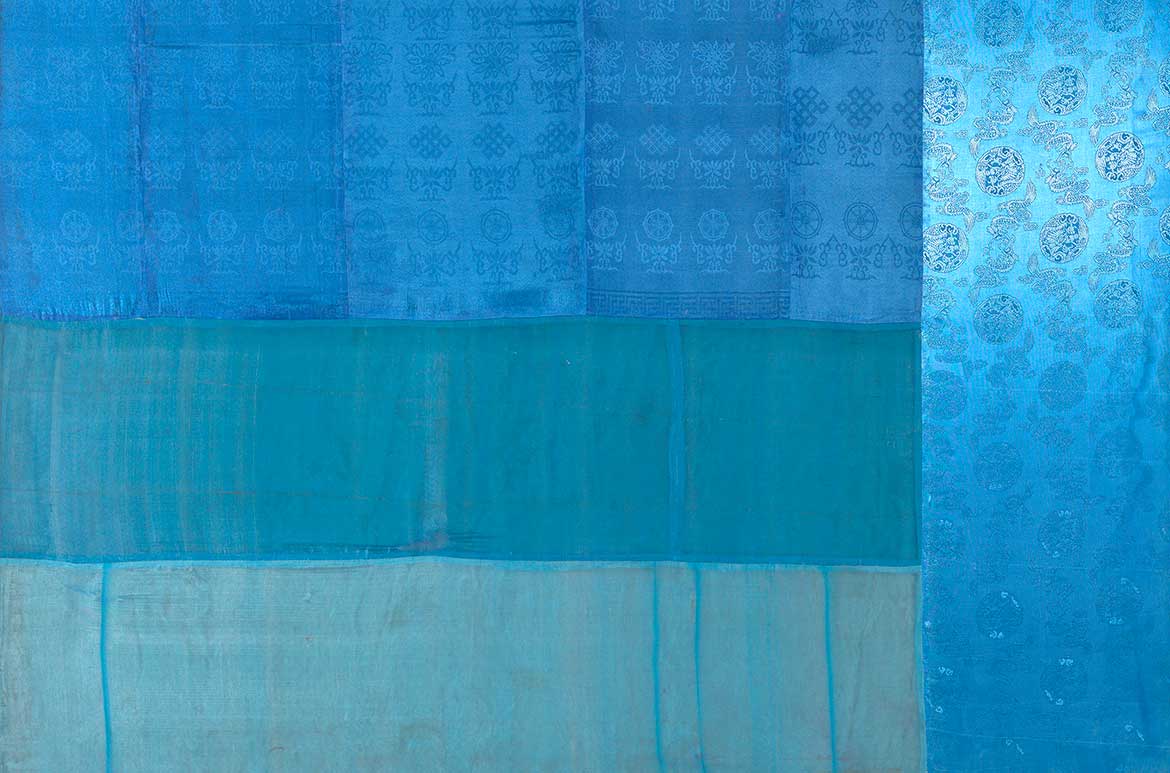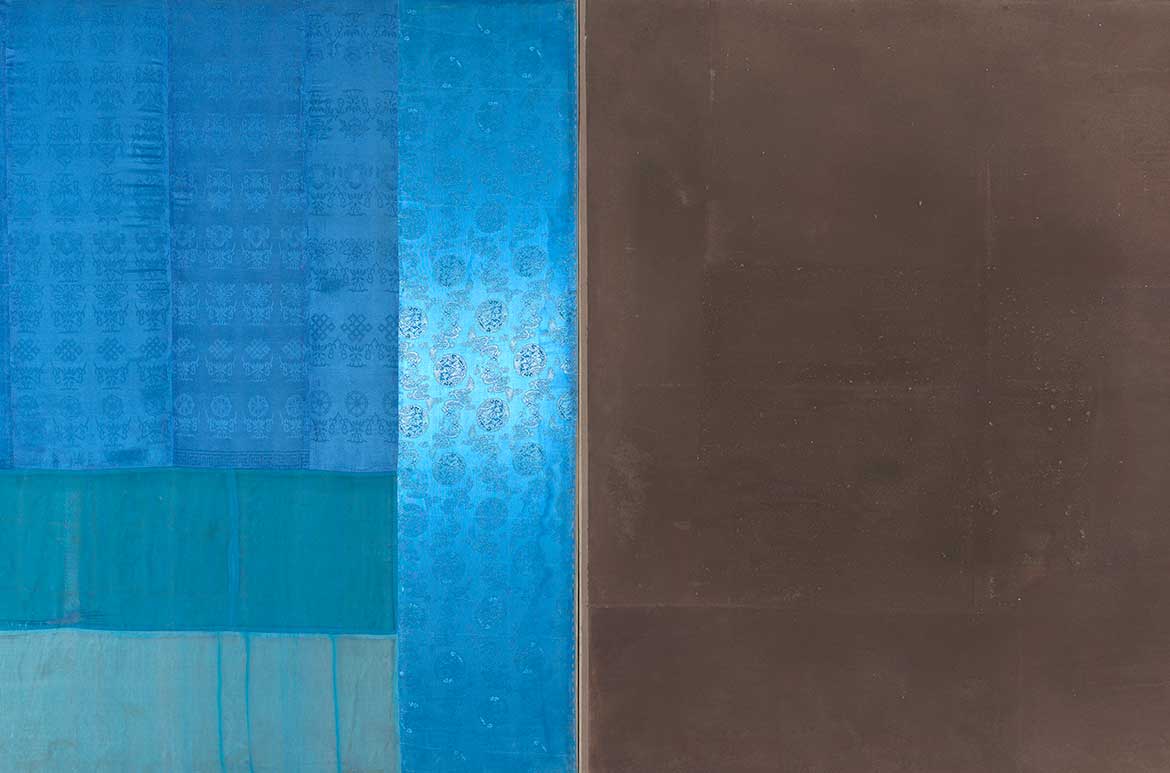Enkhbold Togmidshiirev is a painter and performance and installation artist best known for his large-scale, monochromatic canvases executed in materials derived from his nomadic culture, and improvised performances using the ger, the traditional Mongolian home.1
Created in parallel to his performance work, Enkhbold’s restrained colour-field paintings incorporate unusual media — horse dung, felt, shrubs, ash, rust, sheep skin and tripe — which are either laid over the canvas or worked into its fibres.
These materials are sourced from the countryside, when the artist returns to his homeland, and undergo extensive preparation before he uses them in his paintings. The dung, for instance, is dried and crumbled, and sifted three times to ensure a fine consistency. It is then applied over a base of gelatine and gel, or mixed into the base directly, after which it is covered in acrylic paint. Horse dung can differ in colour and texture depending on the season and the specific environmental conditions of the animals, and so the material provides the artist with a shifting palette.
Occasionally, Enkhbold incorporates collage into his paintings, and fabrics such as cotton, silk and hessian vary the surfaces of his works, introducing formal devices like Rothko-esque horizontal fields through stitching and textural contrast.
Enkhbold’s vast planes of colour and tone are determined exercises in abstraction, an abstraction that the artist also emphasises in the form of his performative ger. It is the materiality of his works, like the performances they complement, that preserves a strong connection with both traditional and contemporary Mongolian life.
Stay Connected: Subscribe to QAGOMA Blog

Benevolence 2013

Born and raised in rural Mongolia, Enkhbold was taught traditional woodcarving by his parents, and studied art at a private technical college in Ulaanbaatar as a young adult. His later studies at the Institute of Fine Art saw him tutored by Enkhbat Lantuu, one of the few Mongolian artists working with abstraction at the time. Lantuu encouraged Enkhbold’s conceptual bent, which developed further on contact with the Blue Sun Contemporary Art Group, and its founder Dalkh-Ochir Yondonjunai, an important interpreter of the work of postwar German artist Joseph Beuys, whose persona and use of unconventional materials are an abiding influence on contemporary art in post-Soviet Mongolia.
Watch Enkhbold Togmidshiirev’s performance
SUBSCRIBE to QAGOMA YouTube to go behind-the-scenes at events and exhibitions / Enkhbold Togmidshiirev’s improvised roving performance, 10.00am Sunday 25 November 2018 at GOMA
Arguably, Enkhbold has attained his greatest visibility through his performances, most notably his Ger Project. The ger is at once robust and eminently portable, highly suited both to a nomadic lifestyle and to low-cost living in Mongolia’s crowded capital.
Since 2008, Enkhbold has created a number of personalised structures derived from the form — the bowed, wooden latticework of Blue sentient 2015, for example, takes on a spherical shape — in order to forge a connection with his surroundings. Setting up a ger creates a temporary home that Enkhbold equates to a spiritual space. His improvised performances have taken place on the frozen steppes (plains) of Mongolia, in the desert, at the edge of the sea, by the side of a highway — sometimes in visual harmony with their surroundings, and in apparent contrast at others.
Reuben Keehan is Curator, Contemporary Asian Art. QAGOMA
Endnote
1 A traditional ger or yurt (from the Turkic languages) is a portable, round tent with a collapsible wooden infrastructure, covered with skins or felt, used as a dwelling by nomadic peoples in Central Asia.

Subscribe to QAGOMA YouTube to be the first to go behind-the-scenes / Watch or Read more about Asia Pacific artists
Buy the APT9 publication
APT9 has been assisted by our Founding Supporter Queensland Government and Principal Partner the Australian Government through the Australia Council, its arts funding and advisory body, and the Visual Arts and Craft Strategy, an initiative of the Australian, State and Territory Governments.
Feature image detail: Enkhbold Togmidshiirev Benevolence (Detail) 2013
#EnkhboldTogmidshiirev #APT9 #QAGOMA
